Daily Telegraph Editorial: Billions of litres for the crayfish
Twenty-two billion litres of water has been sent down the Lachlan River — and is destined to eventually end up in southwest NSW’s Great Cumbung Swamp. That’s enough to sustain Cowra, Condobolin, Lake Cargelligo and Forbes for more than a year.
Opinion
Don't miss out on the headlines from Opinion. Followed categories will be added to My News.
Stay across all the biggest talking points affecting NSW in October as The Daily Telegraph editorial offers you key insights into the news and issues that matter to you.
OCTOBER 31: Billions of litres for the crayfish
When a valuable resource is scarce, conflict is inevitable. Throughout inland NSW, water is in short supply due to a drought seemingly without end.
Previously, this caused conflicts between irrigators and some who blame irrigators and farmers for mass fish deaths.
And now we have a state versus federal water brawl.
At issue is a decision by the federal government’s Commonwealth Environment Water Holder to release 22 gigalitres of water from the Wyangala dam.

That 22 billion litres of water was sent down the Lachlan River — and is destined to eventually end up in southwest NSW’s Great Cumbung Swamp.
The feds say this water “provided critical flows throughout the length of the Lachlan to improve the health of the river system and make it more resilient in the face of possible ongoing drought conditions”.
According to a CEWH source, the prime beneficiaries of the water release include catfish, crayfish and freshwater shrimp. Good for them.
But NSW Water Minister Melinda Pavey has different priorities.
As she points out, 22 billion litres would have been enough to sustain Cowra, Condobolin, Lake Cargelligo and Forbes for more than a year.
Pavey, whose constituents are people and not crayfish, slammed the water agency.
“During times of extreme drought, we need flexibility, not blind recklessness,” she told The Daily Telegraph.
“Farmers have been blamed for a lot while the CEWH continues to pour water down the river without any regard for our communities doing it tough.”
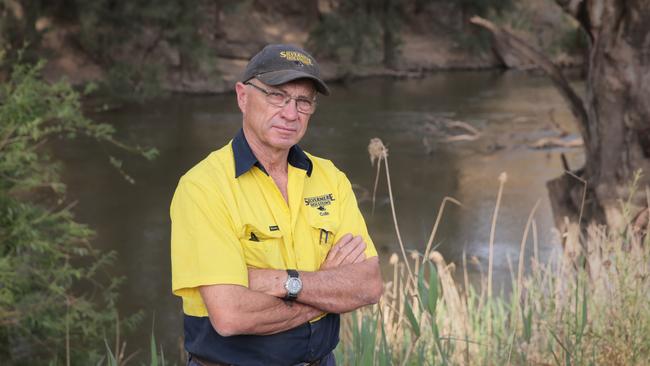
In response to NSW anger, Federal Environment Minister Sussan Ley launched into pure bureaucrat-speak.
“I am assured that the level of co-ordination is such that along the Lachlan, both Commonwealth and State Environmental water reserves are jointly managed and all flows mutually agreed after community and specialist input,” Ley said.
Some clarity came in following Ley’s reply, which noted that authorities should “all work together to consider the trigger points at which water is identified for critical human needs”.
Just a thought but perhaps that concept should be the guiding principle behind every decision made by governments.
Put human needs first.
OCTOBER 30: Google scores it’s day in court
This is shaping up as a truly epic battle between traditional and rising powers.
On one side is the Australian Competition and Consumer Commission, representing local consumer interests. And the other side — and with a significant weight and reach advantage — is Google, the world’s biggest technology company, whose interest in Australian consumers extends to their shopping preferences, search habits and even their locations.
The ACCC yesterday filed landmark legal action against Google in the Federal Court, seeking potential multimillion-dollar penalties and profound changes to how the company obtains information from users.
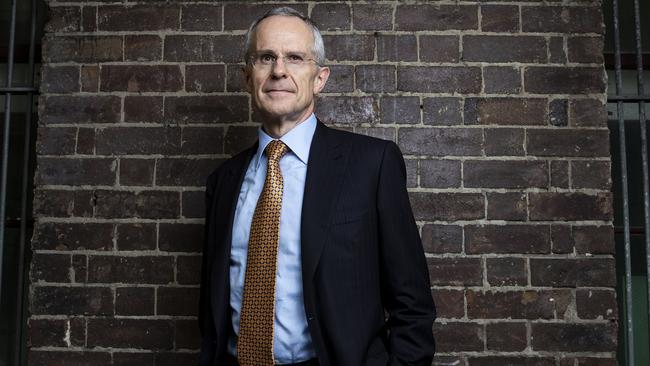
Central to the case, which may reshape the way Australians view and use everyday technology, is an allegation that Google broke Australian Consumer Law between January 2017 and late 2018 by misleading customers about just how intrusive the location information it collected was.
It could all hinge on how the court interprets various Google tracking methods and how they may be disabled by users.
According to ACCC chairman Rod Sims, those who used a Google account on an Android phone or tablet between the dates in question were led to believe they could stop Google tracking them by turning off the “location history” setting.
But the ACCC will allege that users also had to turn off “web and app activity”. Location history was only one element in far broader monitoring activity.
“We are taking court action against Google because we allege that as a result of these on-screen representations, Google has collected, kept and used highly sensitive and valuable personal information about consumers’ location without them making an informed choice,” Sims said yesterday.
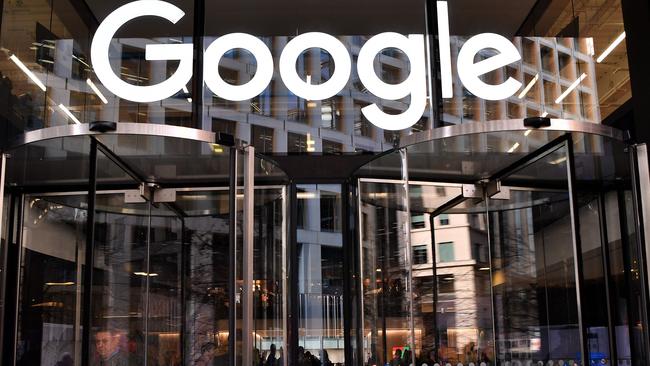
For its part, Google Australia said it was still considering the court case and planned to defend its actions.
“We are currently reviewing the details of these allegations,” a spokeswoman said.
The case is significant not just for the Australian implications but for the potential implications worldwide. The ACCC’s court case is the first such action taken by any regulatory body involving the collection of user location information.
Wherever you are, this case is of great importance. And wherever you are is key to the issue.
OCTOBER 29: ScoMo needs to start scoring
Three factors were of massive assistance to the Coalition’s re-election in May.
None of these were driven by the Coalition itself, although the government did benefit substantially from them.
The first was then-Labor leader Bill Shorten’s inexplicable decision not to release any costings at all for Labor’s ambitious climate change plans.
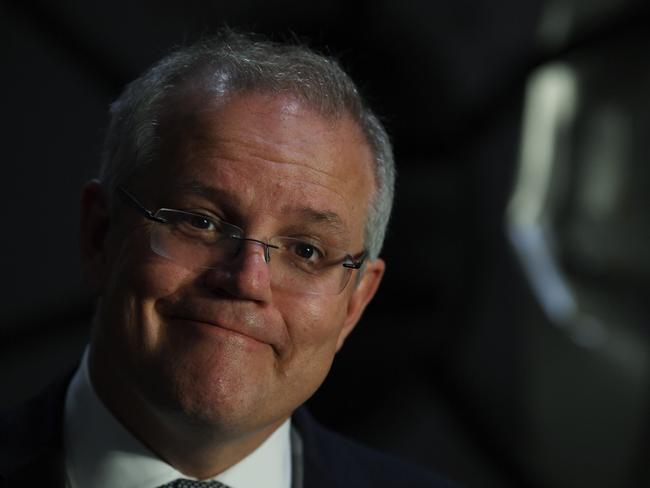
In any election, voters generally need to know how much any proposed policy will cost. In the current economic situation, that need is magnified.
The second was shadow treasurer Chris Bowen’s arrogant dismissal of retiree concerns over his taxation plans. “If you don’t like our policies, don’t vote for us,” declared Bowen.
And the third factor was Greens figurehead Bob Brown’s ill-advised move to lead an enviro-convoy deep into Queensland mining country.
Even Shorten subsequently noted that this stunt was far from helpful to the Labor cause.
Subtract those factors and the Coalition would not have had such a smooth election night.
In fact, the Coalition might not have won at all.
Yet in recent weeks Prime Minister Scott Morrison and his team appear to have forgotten that their re-election was heavily influenced by the faults of others rather than their own policies. On two very important issues, especially, the government now seems content to coast instead of forging ahead.

On power prices, the government is fiddling at the edges when the obvious requirement is for major rebuilding of our nation’s entire power supply structure. Yesterday the PM had this to say online:
“Together with the NSW government we’ll jointly underwrite up to $102 million of the NSW-Qld Interconnector upgrade to access more reliable power generation from Qld to ensure the security of electricity in NSW.”
That’s nice, but it’s more a Band-Aid than surgery. The government has been more effective in dealing with the drought, but here too there is huge room for improvement.
One proposed new dam – the first in NSW for more than three decades – and upgrades to several other dams are not exactly ways to future-proof NSW against future water shortages.
The Morrison government needs to know it cannot rely again on Labor and the Greens to deliver another win.
It needs to start scoring.
OCTOBER 28: Two who will not be missed
The war on terrorism throughout the Middle East is a massively prolonged exercise.
Nevertheless there are frequent breakthrough moments, often leading to broader anti-terrorism successes.
Yesterday’s reports of the death of Islamic State leader Abu Bakr al-Baghdadi may prove to be just such a moment.
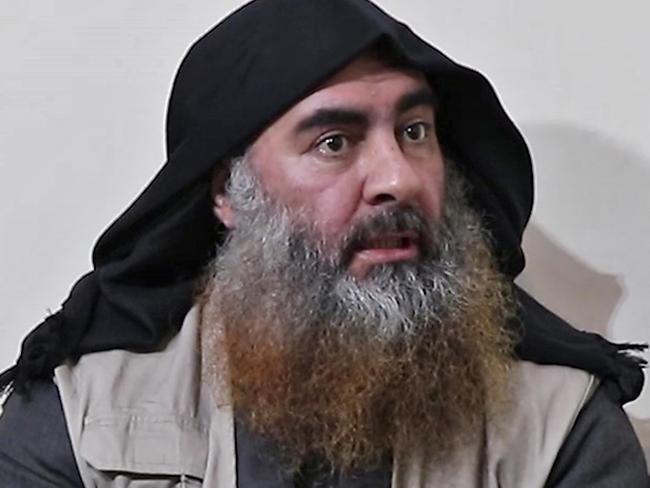
Anticipation of an official announcement concerning the IS butcher’s fate came through the unconventional channel favoured by a very unconventional US President.
“Something very big has just happened!” Donald Trump wrote on his Twitter account.
Those six words quickly drew more than 70,000 replies, providing yet another example of Trump’s social media mastery.
Yet this timely removal of Baghdadi should be far more a cause of celebration across the Middle East than in the White House. As the IS leader, Baghdadi has been responsible for untold carnage on an unbelievable scale.

It should always be remembered, of course, that the vast majority among the thousands slaughtered by IS were Muslims. Islamic State is first and foremost an enemy of the very people it claims to represent.
Many young Australians were seduced by IS’s call to arms, and many young Australians died during their futile IS missions. Their blood, among the blood of so many, is forever on Baghdadi’s hands.
Given recent attempts by IS to reassert its authority in areas from which it had previously been banished, Baghdadi’s death could prove a game-changer. Even at its vicious peak, IS never functioned in a particularly organised or strategic fashion. In the absence of their leader, IS may become even less of a structured force.
This weekend also brought news of backpacker killer Ivan Milat’s death from cancer.

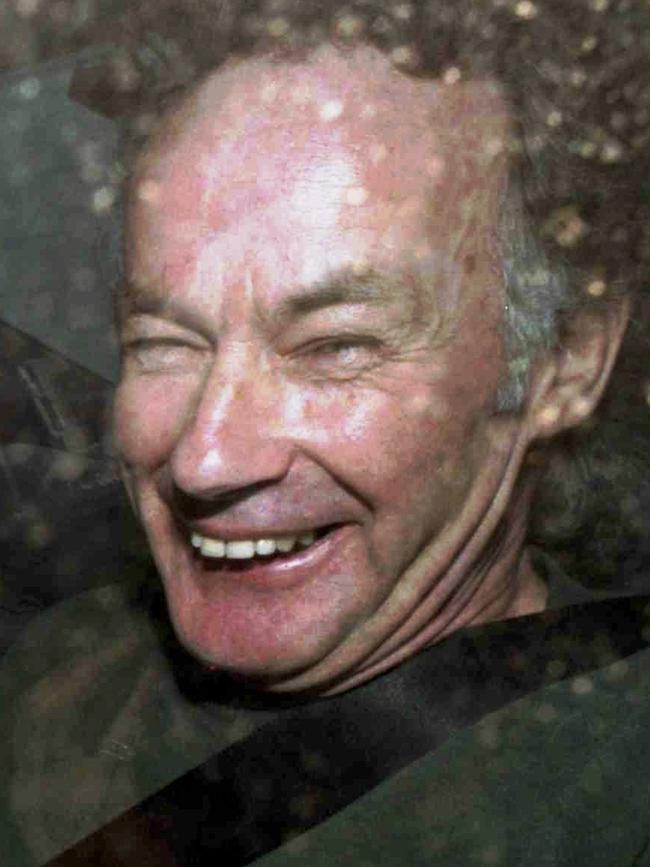
As with Baghdadi, Milat’s loss is a gain for humankind. As his final days drew near, Milat even gave up a tiny opportunity for redemption by declining to reveal murders in addition to those for which he was sentenced to seven life terms.
Even some of history’s worst killers have, in their last days, shown some decency by admitting to further crimes or explaining in detail the crimes they have committed.
Not Milat, however, who gave us another reason to be grateful for him being gone.
OCTOBER 26: Andrew Bogut shames basketball dribblers
Imagine if anyone had predicted a month or so ago that one of the biggest controversies of the year would involve the National Basketball Association and communist China.
That person might have been immediately dismissed as profoundly confused. But this is where we now find ourselves.
The trouble began when Houston Rockets general manager Daryl Morey posted a seemingly harmless note of support for democracy activists.
“Fight for freedom,” Morey wrote. “Stand with Hong Kong.”

China did not appreciate this, as you might expect. And neither did the NBA and various mega-rich NBA personalities, who stand to become even richer through their growing presence on Chinese television and in Chinese advertising.
Matters escalated when LeBron James, who earns around $100 million per year in wages and endorsements, declared that Morey was not “educated on the situation” regarding China and Hong Kong.
He also said that Morey had no “consideration for the consequences and ramifications” of his pro-freedom comment. Exactly what James meant by “consequences and ramifications” is decoded in The Saturday Telegraph today by Australian basketball great Andrew Bogut.
“Don’t give me the ‘I’m not well educated enough on the topic’ or ‘I don’t know enough about the situation’,” Bogut writes. “Just tell the truth.
“That truth would go something like this: ‘I wish not to comment on the matter as I don’t want to hinder any of my future earning potential coming from China.’”
As anyone who is among Bogut’s legions of social media followers would know, the NBL and NBA hero is given to speaking his mind. This has led to his own confrontations with supporters of the Chinese regime.
On the subject of personal liberty, however, Bogut will not be silenced – and for a very personal reason.
“My late grandfather Mile Bogut escaped communist Yugoslavia many moons ago to give his family, and in turn me, a better life,” Bogut explains.
“I am well versed from personal accounts of what went on in those regimes.”
Andrew Bogut plainly lives by an informed moral code that is every bit as powerful as his celebrated defensive game.
Certain NBA officials and players would do well to follow his courageous example.
OCTOBER 25: Try fishing for compliments
An enthusiastic angler and long-time reader of The Daily Telegraph recently hauled in a spectacular catch at his local beach.
He caught a fine three-kilo salmon. Even better, a crowd of beachside admirers was present to witness the impressive feat.
Salmon require bleeding out, so our angler swiftly removed the head and then stuck the fish in some sand in front of his Central Coast house.
Being so deliciously fresh, however, the creature was still flapping its tail. This drew the attention of two passers-by who instantly came to a completely inaccurate conclusion.
“Animal cruelty! Animal cruelty!” one of them screamed, ignoring the angler’s repeated answers indicating the salmon was already dead.
Our angling friend had just experienced a real-life version of a phenomenon becoming alarmingly popular online.
He’d been fish shamed.
Fed-up fishermen are now asking animal activists to tone down their online rage. This follows the trolling of a young boy who had hooked a 314kg tiger shark off Sydney’s coast.

Eight-year-old Jayden Millauro was furiously abused online after a photograph was posted showing Jayden and the legally-caught shark.
“May this haunt you for the rest of your life,” one animal rights troll sneered.
Another took aim at both Jayden and his parents. “It takes a special kind of parent to be proud of your kid killing something for fun,” a woman wrote.
The author continued: “And it takes a special kind of person to encourage them further.”
Being very young, Jayden was understandably distressed by these messages. He is now questioning if he even wants to continue fishing.
Mission accomplished, trolls. You’ve upset a little boy. Congratulations all around.
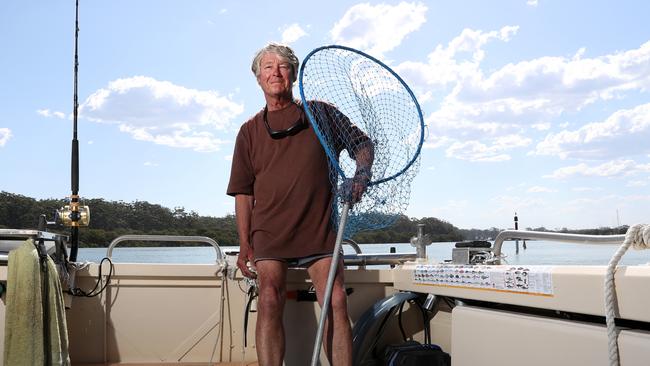
Veteran game fisherman Ron “Simmo” Simpson, 68, has a more sensible outlook.
“These idiots have been prattling on for years,” he said. “They are always carrying on about something.
“But for these people to put shit on this kid is just not on. It’s a great achievement, he’s pulled in a massive shark and it should be something to crow about.”
Very true.
As for our Central Coast mate, his salmon was served up for the family that evening. Winner winner, sashimi dinner.
OCTOBER 24: Add teachers to fix all the sums
There is a theory that the use of electronic calculators since the 1970s has caused a reduction in basic mathematical skills.
To combat this, many older Australians use strategies such as always completing their household maths chores using pen and paper.
Some specialists in ageing believe this may also be a way of maintaining mental acuity.
Certainly, there are quite a few older Australians who feel a little better about themselves whenever they, for example, hand over $15.15 to cover a $13.15 charge – and then watch a young teller use a calculator to figure out the change.
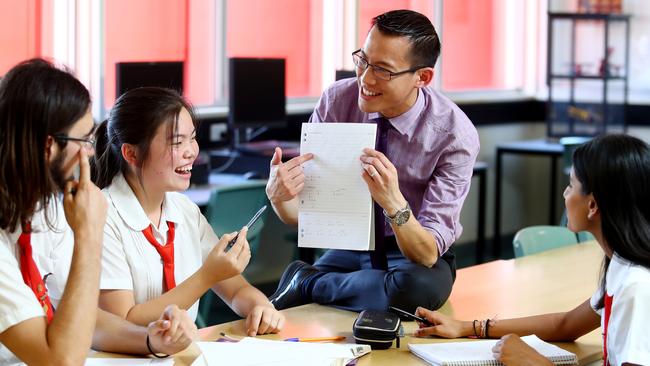
In a bid to boost the mathematical sharpness of students, and maybe even to drag them up to the same levels as the old-school pen-and-paper crowd, NSW students will soon be required to study mathematics all the way from kindergarten until the end of year 12.
This represents a major alteration to the NSW curriculum, which dropped the requirement for a year 12 maths or science component back in 2001.
(For anyone without access to a calculator or an older person, that was 15 years ago.)
Given our intensely maths-based technological era, this change makes sense. The next generations of NSW schoolchildren will be competing in a global jobs market with children who have grown up in maths-focused school throughout Finland, South Korea, Singapore and elsewhere.
“We promised to take the curriculum back to the basics and today we are taking the first steps to deliver on that commitment by prioritising maths,” Premier Gladys Berejiklian said.
“My vision is for every child in NSW to have the necessary maths skills to succeed in life, whether that’s managing home budgets or preparing them for the jobs of the future in science, technology and engineering.”
Yet one potentially major problem may stand in the way. To teach maths throughout every school year, those schools will require an abundance of qualified staff.
“The biggest issue is finding the number of teachers,” Mathematical Association of NSW president Karen McDaid told The Daily Telegraph.
“It is going to be a really problematic situation.”
Possibly, but this seems to be a straightforward mathematical challenge. Add more teachers.
OCTOBER 23: Removing the work barriers
The Daily Telegraph’s Great River Run series earlier this year highlighted the crushing effects of the drought throughout inland NSW, with a particular focus on towns along the mostly dry Darling River.
That series also looked at other regional issues, such as the depleted employment market.
Scarcity of available year-round work in many towns has driven away younger members of their communities, making an eventual economic recovery all the more difficult.
Making recovery more difficult still was the subsequent decision by the Independent Planning Commission to reject a proposed major coal mine in the Bylong Valley.
According to the IPC, the coal mine was not acceptable because it would lead to increased carbon dioxide emissions from coal exported to and then burned in South Korea.
That decision basically set a precedent for the rejection of any future large-scale projects that might involve emissions far from Australia.

In other words, it threatened an enormous amount of potential export earnings in addition to further opportunities for regional employment.
The state government has now taken steps to limit the extent to which environmental effects in other countries can be taken into account when deciding if major projects in NSW should be approved.
Under the proposed new legislation, the NSW state’s Environment Planning Act will prohibit approval conditions that relate to “downstream” or indirect emissions.
This would mean, for example, that any carbon dioxide emissions in South Korea would be South Korea’s responsibility.
In the often puzzling and convoluted world of climate legislation, this is a rare step towards common sense.
Moreover, while the full details of the altered law are yet to be revealed, this could also throw a belated lifeline to regional NSW.
Abundant energy resources remain untapped throughout our state, overwhelmingly in areas with much higher than average unemployment.
The IPC meanwhile is to undergo a major review of its purpose and direction. Under the terms of that review, the very existence of the IPC in its current form is open to question.
In a curious twist, the IPC now feels a little uncertainty.
OCTOBER 22: Farms shamed without cause
For many city dwellers, the ongoing and catastrophic drought across inland NSW is a largely abstract concern.
All are aware of the drought, of course, but relatively frequent coastal rainfall masks the scale of damage for city residents.
While caring about the fate of farmers whose livelihoods are threatened by the drought, city dwellers may only notice its effects through occasional price spikes for various farm-sourced food and dairy products.
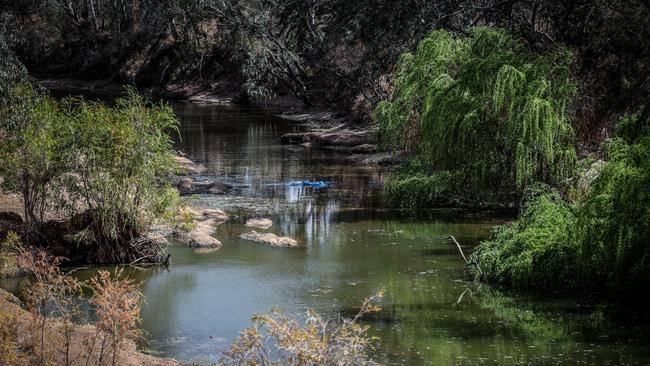
Make no mistake, however. The drought is a brutal ordeal at times seemingly without end.
And this is not the only challenge currently faced by men and women on the land.
Vegan protesters have lately taken to targeting agricultural businesses, placing farms under increased stress.
As well, the sheer duration of the drought is causing younger farming family members to seek employment elsewhere, meaning the drought becomes a generational problem.
On top of that, the Murray-Darling Basin Authority has clumsily added another layer of grief. The authority published images and locations of farms with dam water, effectively shaming landholders.
This was done without any proof at all of illegal activity, yet the details provided by the authority were sufficient to allow the easy identification of dozens of farm properties.
Specific longitude and latitude information was given for 29 private dams throughout the Namoi and three in the Macquarie that were alleged to be full or partially full during a water pumping ban.

Absent any further details, however, that supposed “evidence” means little.
Appropriately, the Murray-Darling Basin Authority quickly withdrew its report and apologised, posting a “publication error” notice on its website.
“The MDBA acknowledges publication of an earlier version (of the report) may have caused unnecessary concern and confusion to landholders,” the statement said.
“Satellite images alone are not evidence of illegal activity, they indicate areas for further consideration and possible compliance investigation.
“The MDBA has uploaded an updated version of the report, and will now review its publishing practices.”
Feelings are running as high as rainfall is low. This awful error definitely did not help.
OCTOBER 21: Right to know when our rulers get it wrong
Creating a society that allows open and honest examination of ruling authorities is not the work of a moment.
Rather, that process requires decades of intense and expensive work building the necessary structures and protections allowing Australians their freedom of knowledge and inquiry.
That freedom is delivered through media in all its forms. Yet even as priceless freedoms have been won, governments and officialdom at all levels have rallied to place legislative barriers between information and the Australian people.
Readers will recall the police raids earlier this year on the home of News Corp journalist Annika Smethurst and the Sydney headquarters of the ABC.
While those raids remain emblematic of a current federal government push for increased secrecy, they were not isolated incidents. Far from it, in fact.
As executive chairman of News Corp Australasia Michael Miller points out, “at least 75 pieces of legislation introduced since 2001 have created roadblocks to stop you finding out what’s going on in this country”.
Consider that damning figure for even a moment and the urgency behind the Australia’s Right To Know campaign becomes immediately clear – as does the need for all media companies to band together in a coalition supporting free speech.
This is not a contest over hypothetical freedoms. This is a struggle involving matters such as taxation legislation, abuse of the vulnerable in aged-care homes, the terms of Australian land sales to foreign entities and even government powers to monitor ordinary citizens.
Clearly, every one of those issues is of interest to every Australian. Indeed, that might be exactly why governments and various official agencies are so determinedly attempting to draw over them a legally-impenetrable veil of concealment.
The timeliness of the Australia’s Right To Know campaign is emphasised by comments made yesterday by federal Attorney-General Christian Porter, who told the ABC he could not guarantee he would resist signing off on the criminal prosecution of investigative journalists.
“I can’t, though, give anything more definitive than that, because my role in this process is to assess a brief that may or may not come up, and a recommendation that may or may not come up, to the Commonwealth Director of Public Prosecutions,” Mr Porter said.
“And it wouldn’t even get to that point until the AFP had concluded their investigation and delivered a brief, if they were minded.”
The mere fact that Mr Porter is even talking about the Australian Federal Police and the Director of Public Prosecutions in relation to journalism should give us all significant pause.
Clearly, a mood is growing within the government to move ahead with plans that would further inhibit proper levels of inquiry and investigation.
That is why Australia’s Right To Know seeks six precise reforms to counter officialdom’s inclinations towards secrecy.
The first is a right to contest any kind of search warrant on journalists or news organisations before any such warrant is issued. This would allow the legality of a search to be considered prior to household or workplace intrusion.
The second reform is a law change that would strengthen the rights of public sector whistleblowers who presently face the threat of dismissal or even prosecution.
The third reform calls for a more strict set of protocols determining which government documents can be marked as officially secret.
The fourth reform asks for a straightforward review of current freedom of information laws, which too often place information behind financial and legislative firewalls.
The fifth reform, among the most vital, requests an exemption for journalists from recently-enacted laws that may see them destined for prison just for doing their jobs.
And the sixth reform would be to defamation laws, which historically in Australia have been exploited by the powerful.
Every major media company in the land is united behind Australia’s Right To Know because it is our business and our honour to keep Australians informed.
This campaign crosses all political and competitive divides for the simple reason that its aims are universal, applying in equal measure to all Australians.
OCTOBER 19: Take the whip to the abusers
Anybody who saw the ABC’s horrific footage of horses being wickedly mistreated – and by now that would be a very large number of viewers – will have been understandably and completely distressed.
The treatment endured by those former race horses was absolutely shocking and the cruelty suffered by some in particular was inexcusable.

And that is why Racing NSW is leading the calls for all guilty parties to be punished and for total nationwide reform of how our nation deals with race horses once they no longer compete.
Racing NSW, in fact, is in an ideal position to make such calls, having independently established peak industry practice in this state.
Racing NSW chief executive Peter V’landys on Friday described his personal reaction to the footage, saying it was “sickening and horrendous”.
As well, V’landys demanded that the Queensland government take the “strongest possible action” in response.
“Such conduct and any mistreatment of horses is not tolerated in the NSW thoroughbred racing industry,” CEO V’landys noted.
This is a crucial point on two very distinct levels.
Firstly, it means that NSW should not be lumped in with the sort of abhorrent practices evidently occurring in at least one Queensland abattoir.


“The story was quite misleading because this is not happening in NSW,” V’landys told broadcaster Alan Jones. “We’re proud of our record here.”
Which leads to the second point. The NSW thoroughbred industry is the perfect blueprint for nationwide regulatory reform. Its record in this area is outstanding.
“Out of 10,000 horses, we rehomed almost every one of them,” V’landys told Jones. “The ABC never returned our calls to give them that advice.”
It is unfortunate that the ABC undercut its own important story by omitting certain key details. The timing of this program, too, seems more than slightly cynical, coming so soon before today’s The Everest at Royal Randwick and Melbourne’s Caulfield Cup.

To the credit of Racing NSW, they have not dodged this controversy in any way even despite today’s massive event.
Further credit is due for past efforts improving treatment of horses. Now the rest of the industry needs to follow.
OCTOBER 18: First steps to a renewed life
The loss of all possessions in any kind of disaster is difficult enough for adults to deal with.
But, being adults, they are at least able to eventually process their problems and begin the hugely challenging task of rebuilding their lives.
For very young children, however, the sudden loss of their beloved toys and clothes is barely comprehensible.
Such is the situation faced by the four children of Rappville residents Tina Haag and partner Robert Collier.

Their three older children, Jesse, 6, Villiam, 3, and Nora, 2, were this week beginning to appreciate the scale of ruin their family had suffered.
“They’re talking about it and it is starting to sink in,” Mr Collier told The Daily Telegraph. “They’re all getting much more upset easily.
“Nora is breaking down and crying quite a lot. She was shaking when we went back to the home at the end of last week. She said she wanted to get her Elsa dress but started crying.”
The older boys desperately missed their bikes which, along with everything else the family owned, were incinerated in a terrifying blaze.
A crowd-funding site was quickly established to raise funds for the family to find new accommodation and cover essentials such as rent and bond, but The Daily Telegraph thought something should be done for those children – and for their youngest sibling, two-month-old Edward.
So we had an old-fashioned whip-around in the office and quickly raised the cash for a few childhood essentials.

Little Nora now has a smart new dress in the style of Frozen’s Elsa character, and her brothers are back on the streets aboard their speedy new Australian-made bikes.
Baby Edward, meanwhile, scored a sturdy replacement bed so he can recommence sleeping by his parents’ sides.
To say these small but meaningful donations have been appreciated would be a severe understatement.
“Villiam woke me up at 5.30am wanting to ride his bike,” Ms Haag reported yesterday. “Nora slept in her dress and has not taken it off yet.”
The challenge is not yet over for this family, nor for all of the other families who battled through this month’s fires.
But they do have each other, and the support of NSW.
OCTOBER 16: Greatest game stays the same
As The Daily Telegraph has previously argued, the location of iconic sporting events does a great deal to build and ensure their tradition and authority.
An Ashes series in England would be substantially reduced if no Test was scheduled for Lord’s, and not just because Australia usually wins there.

Likewise, the Tour de France would be diminished if it was relocated to Dubai, and the Indianapolis 500 might not mean so much if it became, say, the Olomouc 500 run in the Czech Republic.
In the same way that those events are defined by their locations, the NRL Grand Final gains something huge but intangible by being held every year right here in Sydney.
Due to construction work, an opportunity arose for other Australian capitals to host the 2020 and possibly also the 2021 NRL grand finals.
The value of these events was indicated by the number of cities vying to become hosts and the amounts of cash those capitals were prepared to offer.
Brisbane, Melbourne and Perth all put in bids. Melbourne’s plan was to hold the NRL Grand Final the weekend after the AFL Grand Final.
This may have appealed on certain levels.
An NRL Grand Final at the MCG would have enabled the NRL to sell more than 90,000 seats and would also involve a hefty upfront payment from Victorian Tourism.
Thankfully, tradition, reason and the intervention of the NSW Berejiklian government have come together to guarantee the NRL Grand Final will stay where it belongs.

Under a new Sydney agreement, the 2020 and 2021 grand finals will be played at the SCG during Allianz Stadium and ANZ Stadium rebuilds.
According to government sources, the deal goes further, securing the NRL Grand Final for Sydney until at least 2046.
“By 2023 the game will have three brand new state-of-the-art rugby league venues,” NRL CEO Todd Greenberg said.
As well, “our bottom line will not be impacted by using alternative grand final venues during the construction phase”.
The bottom line is important, clearly, but the value of history must not be discounted.
It is now up to the NSW government to build a roster of major Sydney events. The NRL Grand Final is the platform from which to vault forward.
OCTOBER 15: Tough job and the wrong call
Even for a person with considerable experience and expertise in dealing with matters of mortality, examining the tragic deaths of six young Australians at recent music festivals must have been a deeply distressing responsibility.
Yet that responsibility was taken on in a thorough and complete way by State Coroner Harriet Grahame.

To Grahame’s credit, she clearly went beyond a coroner’s standard investigatory levels, even attending two music festivals in order to build a complete picture of the matters at hand.
For fulfilling her role in such a fashion, Harriet Grahame deserves NSW’s admiration. Her recommendations, however, appear at odds with reason.
Most notably, the coroner is understood to be set to recommend the introduction of pill testing at music festivals.
The Daily Telegraph has previously explained in detail the problems with pill testing, so there is no need again to run those arguments.
We would simply note that a pill-testing recommendation would be counter to the policies of the NSW government, and also to the beliefs of any number of senior NSW police.
For those reasons, the government’s long-established stance against pill testing is not about to change due to any report or inquest. All of the protesting arguments have already been heard, considered and properly dismissed.
As well, there is the issue of the Coroner’s attitude towards police who are deployed at music festivals. Having seen first-hand police interactions at these events, Grahame was evidently displeased.

“It made me feel nervous,” the Coroner revealed. “There were lines and lines of police and dogs. I was surprised at how intense it was.”
The number of police at music festivals is a consequence of the scale of the drug problem.
The easiest way to reduce police numbers would be to reduce drug use, which is why police are there in the first place.
Exactly why the presence of police in any circumstance would make the coroner “nervous” is a mystery.
A final word should go to Tony Wood, whose teenage daughter Anna died following a reaction to an ecstasy tablet.
“My recommendation to the Coroner is to listen to the police and others that are against pill testing,” Mr Wood said.
OCTOBER 14: Horses for Group 1 courses
NSW Racing must be on a winner with The Everest, given the lengths Victorian racing officials seem prepared to go to keep the event down. As The Daily Telegraph reports, The Everest – to be run at Royal Randwick this coming Saturday – is being held hostage by Victorians who are denying the race its deserved Group 1 status unless the date of the event is changed to keep it from clashing with the Caulfield Cup.
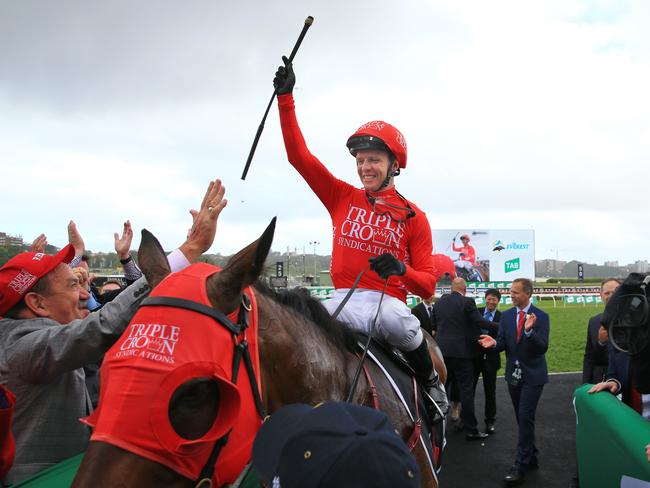
This is nothing more than bloody minded politics, given that every other race jurisdiction in the country is happy to see The Everest awarded the prestigious Group 1 designation. Only Victoria, with its powerful veto, objects.
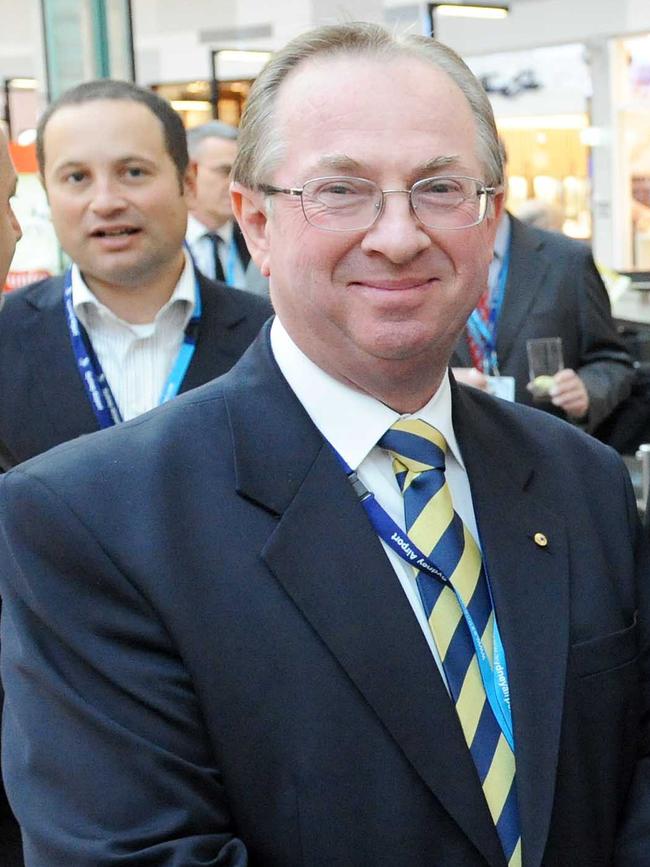
As NSW Racing chairman Russell Balding tells this newspaper: “If the Victorians had their way, the Everest would have been run (last Saturday) and it would have been given Group 1 status … they didn’t want The Everest clashing with the Caulfield Cup … when someone asks me why isn’t The Everest a Group 1 I tell them it is because the Victorians won’t allow it. What the Victorians have done is unfairly impact on the connections of these horses in The Everest.”
Not that it has, ultimately, made much of a difference to the race itself, which with $14 million in prize money has attracted the strongest field of any sprint race in the world in 2019.
Of the 12 horses racing on Saturday, 10 have won a collective 22 Group 1 races, and the remaining two have won at Group 2 level, which is all more reason to credit the race with the status it deserves.
What’s particularly ironic here is that all this has not killed The Everest but rather made it stronger.
And it has at the same time revealed a narrow-mindedness on the part of some in Victorian racing circles who see the competition between our two states not as an opportunity to innovate and grow the popularity of horse racing but rather as a cruel zero sum game where one state’s success necessarily detracts from the other.

This is nonsense, pure and simple.
Horse racing may be the ancient sport of kings, but that is no reason for it not to also be an event for the 21st century.
More events with bigger prize money means more excitement, fun, and punters through the door. It’s a race Victoria and NSW can both win.
OCTOBER 9: On welfare means no drugs
In certain inner-city circles, even the very concept of drug testing welfare recipients is utterly unthinkable. That is because some in that blinkered community have not moved on from a 1970s mentality that holds welfare to be an absolute right, regardless of the circumstances of those receiving welfare.
Sensibly, that view has gradually fallen from favour as Australians have come to accept that welfare is a privilege and should not be abused.

Yet still there are some who believe welfare should be granted to just about anybody who puts out their hand.
Because this group includes many prominent media voices, it often appears to be a majority or mainstream outlook.
But a stunning new YouGovGalaxy survey for The Daily Telegraph now reveals overwhelming national support for a drug testing trial.
In a game-changing result, the poll found that 70 per cent of Australians approve a federal government proposal to screen 5000 Newstart and Youth Allowance recipients.
Under the government’s drug testing plan, welfare recipients in Canterbury-Bankstown, Logan in Queensland and Mandurah in Western Australia will be tested for the presence of heroin, cannabis, ecstasy, ice and cocaine. Naturally, this has outraged the welfare industry.
This is understandable. The welfare industry would not exist if the number of people on welfare is drastically reduced.
The welfare industry’s condemnation should be seen for what it is: pure self-interest.
Labor, which opposes the drug testing plan, may be surprised to discover that 63 per cent of Labor voters were in favour of it. If Labor has any serious desire to present a brand that is truly distinct from the Greens, this would seem to be an ideal opportunity.
The Daily Telegraph’s quick survey yesterday of Bankstown Centrelink clients also turned up what some might consider surprising results.
Of 14 people currently or presently on Newstart or Youth Allowance, nine supported drug testing. Three were undecided. Only two were opposed.
Brooke Masmela, a previous Newstart recipient, made an extremely good case for the trial.
“I think it’s fair because it’s taxpayers’ money,” Ms Masmela said. “If they are good enough to help you then you need to be legit.” Well said.
OCTOBER 10: Rappville in far north NSW remained much as it ever was last week – a small village of fewer than 200, many of them retirees enjoying serene country living.
Police now suspect that something terrible, committed near midnight on Friday by someone possessing neither morality nor imagination, set in train the horrific events that have all but erased this formerly picturesque town.
“The cause of the fire is still being determined but we have identified some suspicious activity,” RFS Superintendent Michael Brett said yesterday.
“It is an ongoing investigation but it was potentially deliberately lit.”

Some 30 properties and more than 90,000ha of bushland now lay in ashes following days of fire and fury.
Speaking on behalf of the entire state, Emergency Services Minister David Elliott yesterday condemned anyone who may have lit the blaze.
“It really is a bastard act if you are going to put your own community at risk,” an incensed Elliott told reporters.
Yet this possible act of evil has quickly given way to humanity’s better side. More than 300 firefighters are currently trying to contain the continuing disaster, and their ranks will grow as volunteers pour in from Queensland and Victoria.
As well, friends and families of those who have lost their homes have rapidly formed support teams.
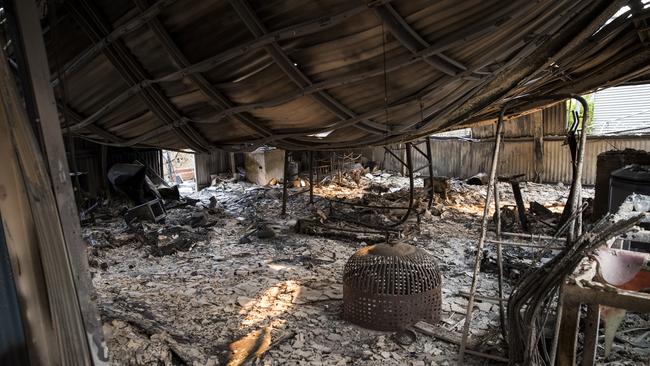
As Richmond Valley Mayor Robert Mustow reports, everyone involved faces enormous challenges.
“One man named John could barely get off the bus because his walking stick burnt down,” Mustow revealed.
“There is no doubt this is a challenging time for the whole community, and not just for those affected by the fire.
“There are a lot of family and friends involved in this.”
And then there are dedicated charity groups who have swung into action.
“The response is unbelievable,” Mustow said.
“We’ve had charity organisations here working all night last night.”
This is the Australia we know and love. We are a people who will always stand up for our fellow Australians in their time of desperate need.
That selflessness and generosity is as far away from the hateful callousness of an arsonist as can be conceived.
OCTOBER 8: Sydney police no pushovers
Sydney’s patient citizens have put up with a lot so far this year.
They have had to deal with light rail construction difficulties, housing market uncertainty, state and federal elections plus all the usual expenses and inconveniences that are part of city life.
Even when Sydney turns to the NRL grand final for some welcome entertainment, the match is ruined by chaotic refereeing and a bewildering Clive Churchill medal controversy.
Finally, yesterday’s Labour Day break gave Sydney’s long-suffering citizens a moment to relax ahead of the run to Christmas and the New Year.
And that’s when Extinction Rebellion struck.
About 300 of the ragtag climate protesters swarmed the city, blocking traffic and causing pointless delays.
Further disruptive and selfish Extinction Rebellion antics are planned for the rest of the week.
As protesters began milling around yesterday in the CBD, an onlooker shared a quiet word with nearby riot squad officers.
“You guys are arresting them, right?” the gentleman asked.

Happily, they are. Sydney is not Brisbane, where police were initially reluctant to make even a single arrest when climate protests began some months ago.
And Sydney is not Canberra, where a road-blocking protest yesterday resulted in absolutely zero arrests.
Sydney police mean business, as Assistant Commissioner Mick Willing made powerfully clear yesterday.
“Despite the warnings issued by local police and our colleagues from across the country, this group continue to set out to break the law and put themselves and others at risk,” former homicide chief Willing said.
“We are aware that this particular group of protesters intend to cause significant disruption to the community, and any future activity of this nature will not be tolerated by NSW Police.
“Anyone who chooses to flout the rules and cause trouble should expect to feel the full force of the law.”

Good. Around 30 or so protesters were arrested yesterday, including one academic who came all the way from the Blue Mountains just to make the day worse for Sydney drivers.
The police have done their job very well. Now the courts need to support our police by handing down heavy fines – and recording convictions.
OCTOBER 7: Grand venue for a grand game
Venues are vital to the to the establishment and maintenance of sporting traditions.
To confirm this, look at the history of the America’s Cup yacht race subsequent to Australia II’s brilliant breakthrough victory in 1983.
While that victory was obviously one of our nation’s greatest sporting conquests, the America’s Cup was definitely diminished as a spectacle by shifting races to locations far from the New York Yacht Club.
Formerly front page news, the America’s Cup is now just a yacht race. Few outside of the sailing world would even be aware of where and when the next America’s Cup will be held.
(Just for the record, the 2021 America’s Cup will be held in New Zealand’s Hauraki Gulf.)
The NRL Grand Final will never be just another rugby league game, but a great deal of tradition would obviously be put at risk if the game’s pinnacle match is shifted away from its historic Sydney home.
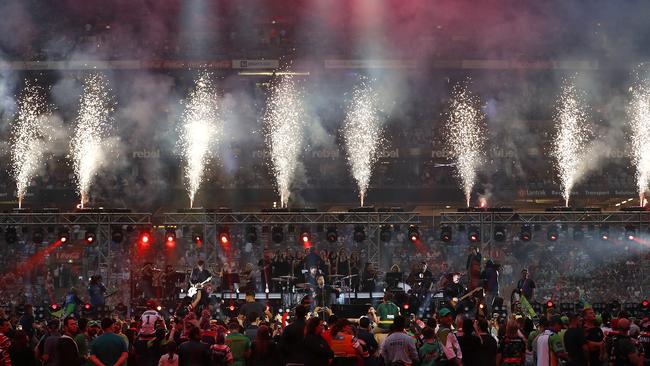
Yet exactly such a move is being considered by the NRL, currently juggling hosting pleas from Queensland, Victoria, Western Australia and even New Zealand. The America’s Cup plainly isn’t enough.
Besides continued pressure from Queensland, this issue is provoked by delays to the refurbishment of ANZ Stadium.
Those delays mean the 2021 NRL Grand Final will be played at the SCG – but only if the match stays in NSW and is not moved interstate or overseas.
Of course, the SCG hosted the NSWRL Grand Final from 1935 to 1945 and again from 1952 right through until 1987, plus several other years besides.
A one-off grand final in 2021 would be quite a homecoming for the biggest single NRL battle of the year, even if the crowd size is reduced.
But a grand final in Perth? Who could countenance such an abomination? It would be like scheduling a New Year’s Ashes Test for Pyongyang.
Yesterday’s spectacular grand final, and the week of celebrations before it, showed that this is a Sydney occasion.

If potential poachers in Queensland, Victoria, Western Australia and New Zealand are honest with themselves, they will admit this and accept it.
Or else NSW may be forced to go on a few raids ourselves.
We’re much richer than other states and will soon have venues able to host all sorts of events.
Your move, poachers.
OCTOBER 5: Ditch the IPC and move on
The Independent Planning Commission was, in its conception, a sound idea.
It was first introduced as a means of putting some distance between potentially lucrative planning decisions and certain ambitious Labor politicians.
Labor is now long gone from state power, but the IPC lives on.
Over time, the IPC’s role has significantly shifted. As its recent anti-mining decision revealed, the IPC no longer exists as a corruption safeguard.
It now sees fit to dictate policy to an elected government.
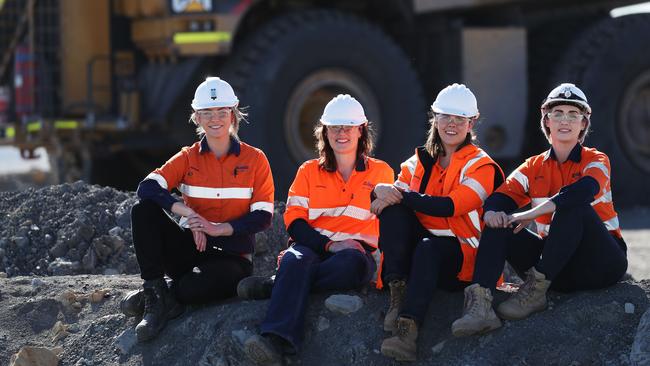
That is reason enough to scrap this intrusive, unrepresentative body, and now we have the final straw.
As The Saturday Telegraph reveals, the Independent Planning Commission cannot even plan its own schedules.
Yesterday the IPC announced approval for a significant NSW mine extension.
This 21-year extension had been sought by the owners of the Rix’s Creek coalmine near Singleton, who greeted the IPC’s decision with great glee.
Also deeply pleased by the announcement were the 300 employees at the mine.
But it was all a complete mix-up. Within just two hours, the IPC had recalled its decision.
So what on earth went wrong? Why was the announcement made prematurely?
It quickly emerged that the IPC discovered it had not considered all public submissions when it published its approval.
Moreover, the bungling IPC had announced the mine extension approval even before the official deadline for public submissions had expired.

Planning Minister Rob Stokes made clear his anger following yesterday’s debacle.
“I have made very clear to the IPC that my priority is to clear the decks of proposals that have been stuck in the system for too long,” the Planning Minister told The Saturday Telegraph.
Those 300 workers will now be forced to wait for at least another week to learn the fate of their mine – a fate that could easily be as negative as yesterday’s was positive.
“It may only be a further week’s delay, but after six years of uncertainty this will seem like an eternity to the Upper Hunter community and The Bloomfield Group,” Planning Minister Stokes said.
The NSW government is elected to make decisions on behalf of the citizens of this state. Ditch the IPC now.
OCTOBER 4: A tough job made tougher
The shocking events of Wednesday night are a sobering reminder of the dangers faced at all times by police. This applies even when they are within a police station.
After firing a shotgun at the house of estranged lover Stacey Taylor, an out-of-control Daniel King then fired on a police station at St Marys.
King finally blasted the Penrith police station before officers returned fire, killing the tattooed bodybuilder.
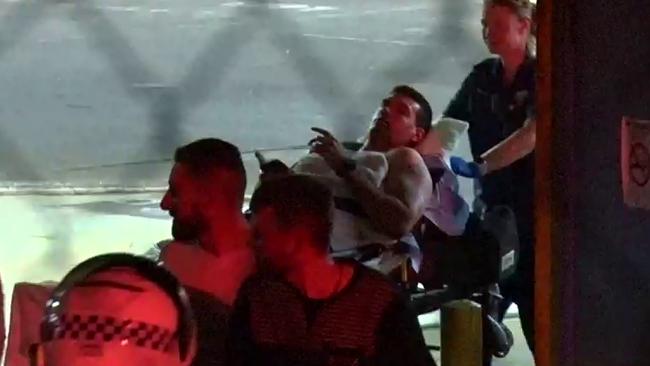
According to a friend interviewed by The Daily Telegraph, King’s plan was to commit suicide through police gunfire.
“It wasn’t an accidental death. Daniel planned his suicide,” the friend said. “He wanted police to take him out.”
In the process, King could have taken out a police officer or other innocent individual.
At least one officer required hospital treatment for wounds.
As well, officers involved in retaliatory shooting must deal with the considerable trauma of the event. In order to defend their own lives, they were forced to take the life of another.
Subsequent to this outrage, however, a very worrying aspect of police investigatory procedure has come to light.
A woman who communicated with King in August was so concerned about his threats to kill Taylor and her unborn baby that she forwarded those text messages to King’s former lover.
Understandably, Taylor contacted police to make them aware of the texts and their chilling contents.

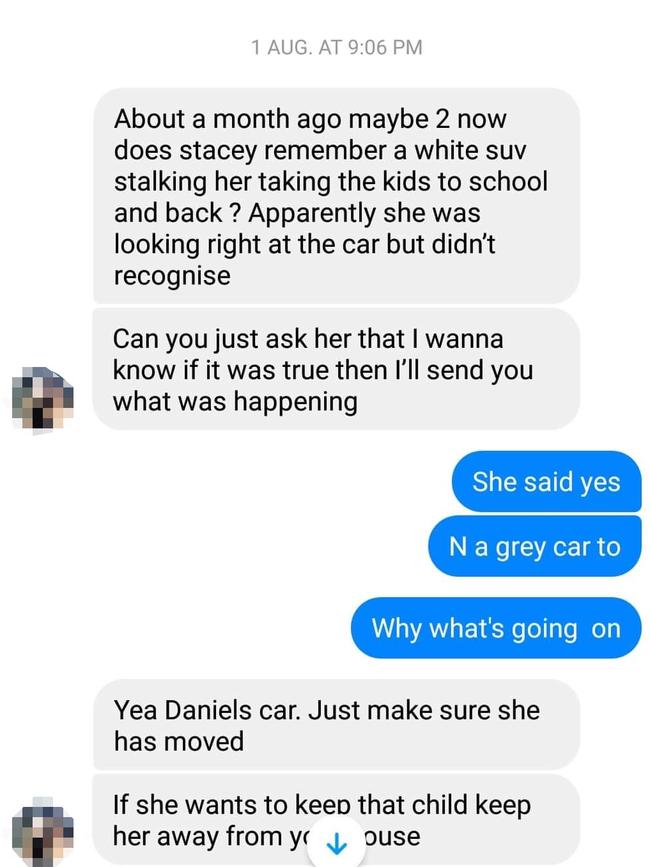
Police visited Taylor’s home but later rang, she said, to inform her the texts were insufficient evidence to warrant an apprehended violence order.
This was apparently because they had not been sent directly from King to Taylor but had involved a third person.
If this decision was taken by a particular officer, that officer may need further training.
But if the decision was a matter of policy, then it needs urgent revision.
A threat is a threat. The manner in which it comes to the attention of a target should make no difference at all.
Additionally, King’s menacing words should have prompted a police check of his social media accounts. Those accounts reveal a deeply troubled and unstable man, which might have done more to justify an AVO.
All the signs were there. Investigators can hopefully learn from this flawed process.
OCTOBER 1: A safe Sydney enriches us all
Sydney is set to find a new balance between stringent late-night limits on bars and clubs and the need to revive our city’s night-life.
The Joint Select Committee on Sydney’s Night Time Economy now recommends a relaxation of lockout laws and similar anti-violence measures in a bid to generate billions from a restored evening economy.
The Daily Telegraph believes the moment is right to make these adjustments. We would also add an additional point.
Those lockout laws, which the committee believes should remain in Kings Cross for 12 months even if they are withdrawn from other previously troubled areas, were a correct response by the government at the time they were introduced.

While it is true that some late-night businesses suffered subsequent downturns, it is also true that Sydney had at that point developed a damaging reputation for violence.
That reputation also cut deeply into tourist numbers.
Tourists naturally prefer to visit cities where they are assured of personal safety. A look at the tourism statistics for New York reveal the influence on tourism of a city’s crime levels.
During typical recent years New York will attract around 60 million tourists. That represents double the visitors compared to the 30 million per year recorded during the 1990s.
Many of those visitors are drawn to New York’s famous Times Square in mid-town Manhattan. And here we see the clear and telling link between tourist numbers and security.
Last year around 2600 major crimes were reported in the Midtown area, making it one of the safest places in what has lately become one of America’s safest large cities.

By comparison, nearly 23,000 major crimes were reported throughout Midtown in 1990. Tourists fled the place.
Now consider the worrying trend towards increasing violence that was halted by the lockout laws. The committee found there were 1921 fewer assaults in Kings Cross between January 2014 and March 2019 as a result of the laws.
That is a 52.8 per cent drop in non-domestic assaults. Had the mayhem in Kings Cross not been addressed, international tourism across the whole of Sydney would have collapsed.
Sydney can once again turn on the fun. Keep it safe and watch tourism keep growing.
The Daily Telegraph, printed and published by the proprietor, Nationwide News Pty Ltd A.C.N. 008438828 of 2 Holt St, Surry Hills NSW 2010, at 26-52 Hume Highway, Chullora. Responsibility for election comment is taken by the Editor, Ben English.
